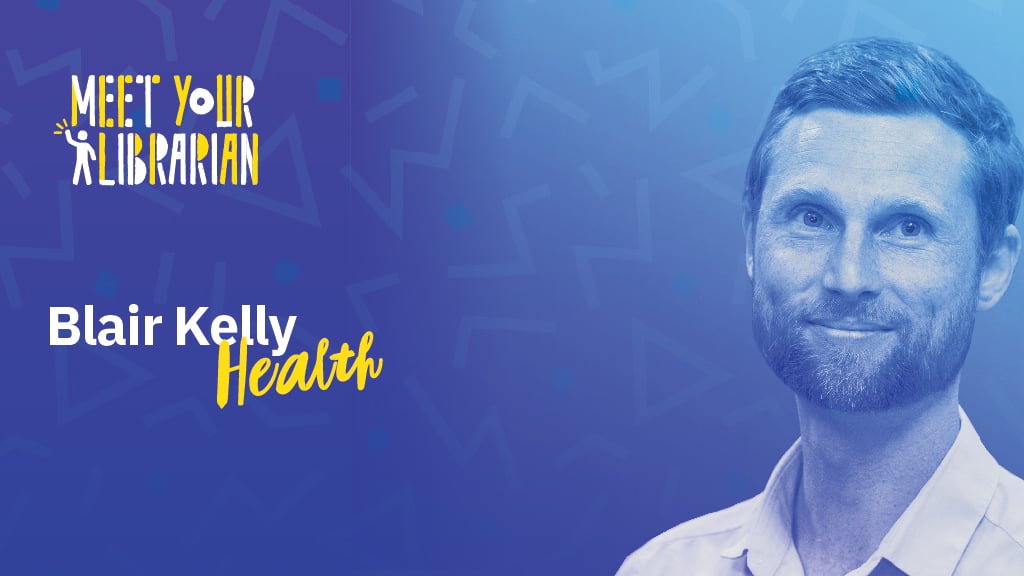Meet your librarian: Blair Kelly, Health
Continuing our Meet your Librarian series, today we are featuring Blair Kelly, our Medical Librarian for Health at Waurn Ponds Campus.
My area of expertise
Medicine
My favourite quote
‘I did then what I knew how to do. Now that I know better, I do better.’ – Maya Angelou
Some of my favourite resources
The online version of Australia’s Therapeutic Guidelines publications is an easy-to-use, immediately relevant evidence summary platform. Therapeutic Guidelines aim to provide independent, objective information on the use of medicines for the Australian community and their regularly updated series of guideline titles are well-respected among clinicians across the country.
BMJ Best Practice is another evidence summary platform. Being produced by the BMJ, it has a slight northern hemisphere bias but its easy-to-use navigation structure, access to an offline app and regular updates in response to shifts in evidence make it a valuable tool. Although it’s targeted at practising clinicians, I regularly recommend it to students as a starting point to get an overview of a condition along with the epidemiology and aetiology, and approach to diagnosis and treatment. The evidence summaries contain in-text links to the references being relied on for particular recommendations, meaning you can trace the evidence back to its original studies. Very handy!
Visible Body offers a range of apps featuring CGI perspectives of the human body. This allows for user-directed manipulation of the anatomical structures and personalised customisation of the visible features, which is a very nice option for learning anatomy and physiology. Along with Visible Body’s Human Anatomy Atlas, the Physiology and Pathology app offers more detailed explanations enabling students to understand symptoms and conditions.
Kanopy is a streaming video platform. What I like most about Kanopy is the breadth of its topic coverage, from well-known feature films to more obscure documentaries. There’s always something that catches my eye on Kanopy; sometimes it’s something I have wanted to watch but never got around to, and sometimes it’s something new to me. For teaching staff looking to diversify their learning resources, I recommend searching Kanopy to see if something jumps out as suitable. The clip creation tool in Kanopy means students can be directed to the most specific part(s) of the recordings, and the transcription feature makes these accessible to a wider range of people.
Scopus offers so much detail on the research landscape across the sciences that it’s hard to know where to begin, and I’m sure I only use a fraction of what is available to users. I usually recommend this to students and researchers for citation tracking purposes, but it’s also useful for topic searching or searching for known, key authors in a field in order to track their publications. Scopus’s companion product, SciVal, allows researchers to investigate their own research output and get an understanding of their ranking within their field or to identify their high-impact publications. True, the scale is sometimes overwhelming – but with focused searching, this becomes less of an issue and the benefits afforded by using Scopus really come to light.
My favourite recent book
Definitely not a new book, but I recently read Ursula K. Le Guin’s The Dispossessed: An Ambiguous Utopia and was very glad I did.
How to get in touch
T: 03 5247 9392
Originally published on Article, the Deakin Library blog.
